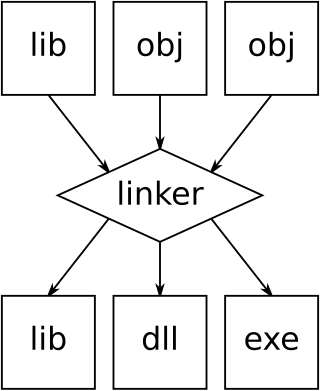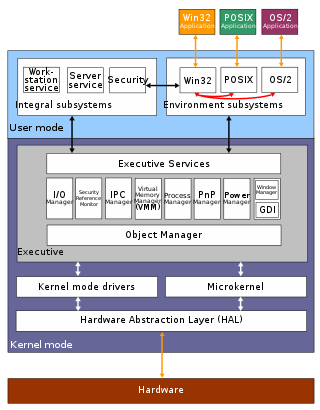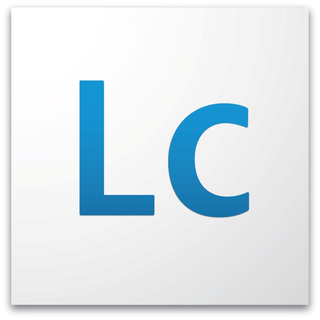
Accounting, also known as accountancy, is the processing of information about economic entities, such as businesses and corporations. Accounting measures the results of an organization's economic activities and conveys this information to a variety of stakeholders, including investors, creditors, management, and regulators. Practitioners of accounting are known as accountants. The terms "accounting" and "financial reporting" are often used interchangeably.

In computing, a database is an organized collection of data or a type of data store based on the use of a database management system (DBMS), the software that interacts with end users, applications, and the database itself to capture and analyze the data. The DBMS additionally encompasses the core facilities provided to administer the database. The sum total of the database, the DBMS and the associated applications can be referred to as a database system. Often the term "database" is also used loosely to refer to any of the DBMS, the database system or an application associated with the database.

In computing, a linker or link editor is a computer system program that takes one or more object files and combines them into a single executable file, library file, or another "object" file.

In computer science, a library is a collection of resources that is leveraged during software development to implement a computer program.

In computing, extract, transform, load (ETL) is a three-phase process where data is extracted, transformed and loaded into an output data container. The data can be collated from one or more sources and it can also be output to one or more destinations. ETL processing is typically executed using software applications but it can also be done manually by system operators. ETL software typically automates the entire process and can be run manually or on reccurring schedules either as single jobs or aggregated into a batch of jobs.
Rational ClearCase is a family of computer software tools that supports software configuration management (SCM) of source code and other software development assets. It also supports design-data management of electronic design artifacts, thus enabling hardware and software co-development. ClearCase includes revision control and forms the basis for configuration management at large and medium-sized businesses, accommodating projects with hundreds or thousands of developers. It is developed by IBM.

A Laboratory management system (LIMS), sometimes referred to as a laboratory information system (LIS) or laboratory management system (LMS), is a software-based solution with features that support a modern laboratory's operations. Key features include—but are not limited to—workflow and data tracking support, flexible architecture, and data exchange interfaces, which fully "support its use in regulated environments". The features and uses of a LIMS have evolved over the years from simple sample tracking to an enterprise resource planning tool that manages multiple aspects of laboratory informatics.
Hibernate ORM is an object–relational mapping tool for the Java programming language. It provides a framework for mapping an object-oriented domain model to a relational database. Hibernate handles object–relational impedance mismatch problems by replacing direct, persistent database accesses with high-level object handling functions.
In library and archival science, digital preservation is a formal process to ensure that digital information of continuing value remains accessible and usable in the long term. It involves planning, resource allocation, and application of preservation methods and technologies, and combines policies, strategies and actions to ensure access to reformatted and "born-digital" content, regardless of the challenges of media failure and technological change. The goal of digital preservation is the accurate rendering of authenticated content over time.

The architecture of Windows NT, a line of operating systems produced and sold by Microsoft, is a layered design that consists of two main components, user mode and kernel mode. It is a preemptive, reentrant multitasking operating system, which has been designed to work with uniprocessor and symmetrical multiprocessor (SMP)-based computers. To process input/output (I/O) requests, it uses packet-driven I/O, which utilizes I/O request packets (IRPs) and asynchronous I/O. Starting with Windows XP, Microsoft began making 64-bit versions of Windows available; before this, there were only 32-bit versions of these operating systems.
OpenBSM is an open source implementation of Sun's Basic Security Module (BSM) Audit API and file format. BSM, which is a system used for auditing, describes a set of system call and library interfaces for managing audit records as well as a token stream file format that permits extensible and generalized audit trail processing.
Microsoft SQL Server Integration Services (SSIS) is a component of the Microsoft SQL Server database software that can be used to perform a broad range of data migration tasks.
In computer science, persistence refers to the characteristic of state of a system that outlives the process that created it. This is achieved in practice by storing the state as data in computer data storage. Programs have to transfer data to and from storage devices and have to provide mappings from the native programming-language data structures to the storage device data structures.

Adobe LiveCycle Enterprise Suite (ES4) is a service-oriented architecture Java EE server software product from Adobe Systems used to build applications that automate a broad range of business processes for enterprises and government agencies. LiveCycle ES4 is an enterprise document and form platform that allows capturing and processing information, delivering personalized communications, and protecting and tracking sensitive information. It is used for purposes such as account opening, services, and benefits enrollment, correspondence management, requests for proposal processes, and other manual-based workflows. LiveCycle ES4 incorporates new features with a particular focus on mobile devices. LiveCycle applications also function in both online and offline environments. These capabilities are enabled through the use of Adobe Reader, HTML/PhoneGap, and Flash Player clients to reach desktop computers and mobile devices.
In computer programming, a handle is an abstract reference to a resource that is used when application software references blocks of memory or objects that are managed by another system like a database or an operating system.

Object Manager is a subsystem implemented as part of the Windows Executive which manages Windows resources. Resources, which are surfaced as logical objects, each reside in a namespace for categorization. Resources can be physical devices, files or folders on volumes, Registry entries or even running processes. All objects representing resources have an Object Type property and other metadata about the resource. Object Manager is a shared resource, and all subsystems that deal with the resources have to pass through the Object Manager.
Corporate services or business services are activities which combine or consolidate certain enterprise-wide needed support services, provided based on specialized knowledge, best practices, and technology to serve internal customers and business partners. The term corporate services providers (CSPs) is also used.
An inventory is an itemized list of objects that a museum has accessioned or received via loan(s) and must be physically located by an examiner. A complete, one-hundred percent inventory, or a random inventory of the collection should be carried out periodically to ensure the museum is operating under best practices and for security purposes. The museum is legally responsible and ethically obligated for the maintenance of up-to-date information detailing the location of all objects within the collection, including loaned items and objects that have yet to be accessioned; this is stipulated by many museum associations, including the American Association of Museums.
Managed file transfer (MFT) is a technology that provides the secure transfer of data in an efficient and reliable manner. MFT software is marketed to companies as a more secure alternative to using insecure protocols like FTP and HTTP to transfer files. By using an MFT solution, companies can avoid custom scripting and meet compliance requirements.

Deaccessioning is the process by which a work of art or other object is permanently removed from a museum's collection to sell it or otherwise dispose of it.








